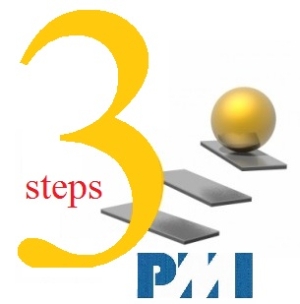The process of managing project team is an activity that allows tracking performance of team members, using feedback, resolving strategic and operational issues, and managing changes for the purpose of optimizing project performance.
The process of managing project team addresses specific team management challenges associated with communication, recognition and assessment of team objectives. The project manager takes responsibility of managing project team and ensuring success of team management activities. The project manager should have and use the following interpersonal skills for managing project team:
- Leadership is a critical skill for teambuilding and teamwork management. A high level of leadership allows the project manager to communicate the project vision and organize the project team to achieve high performance.
- Influencing is critical for bearing influence on project stakeholders and their decisions. The project manager needs to develop this interpersonal skill to reach mutual agreements with project team members and address critical issues.
- Effective decision making is an ability to undertake the decision-making process which entails conducting negotiations with stakeholders and project team for the purpose of studying environment factors, developing personal quality of team members, stimulating team creativity, and managing risks and opportunities.
The process involves the use of specific project team management methods and techniques which are listed below:
- Method of communication and supervision is used to track current work and attitudes of project team members. By means of live conversation and observation, the project manager communicates with team members and reviews their achievements in the context of deliverables, accomplishments and interpersonal issues.
- Method of performance appraisals allows measuring performance of project team members to clarify project team roles and responsibilities, review constructive feedback, discover unresolved issues, develop individual training programs, and outline specific goals for future project activities.
- Method of conflict management allows handling conflicts in a team environment to achieve higher productivity and positive working relationships among team members. The method is used within the conflict management process and managed by the project manager. The following characteristics of conflict should be considered while perfuming the conflict management process:
- Nature of conflict: a conflict may be a team issue or an individual issue.
- Openness to conflicts.
- Time: a resolution of conflict should focus on the present, nit the past.
Success of the conflict management process requires application of different conflict resolutions styles, and the project manager should consider the following factors when deciding on a resolution style:
- Conflict intensity and importance
- Available time for resolving conflict
- Players involved in conflict and their position to conflict
- Motivation to resolve conflict
- Technique of issue logging allows making records on all issues occurred during the project course to create issue logging documents (the issue logs). The issue logs help monitor persons responsible for issues and address obstacles that block project team members from implementing objectives and goals.
The implementation of the methods and techniques results in fostering teamwork, integrating collaborative efforts of team members, and achieving high performance. In particular, the following outputs can be obtained from the successful project team management process implementation:
- Change requests are generated during the course of the process and submitted to the project management team. Change requests allow reducing the probability or issue occurrence and mitigate a negative impact on project activities. The major purpose of change requests is to ensure development of preventive actions to reduce team member absence, achieve appropriate role clarification, and avoid gaps in project schedules and timelines.
- Project management plan updates generally include changes to team member roles, responsibilities and authorities which all together are parts of the staff management plan.
- Project management organization assets include lessons learns documentations, historical records, various templates, and standards. All this information can be collected and then used later in future projects.
Jump to the nest step of the human resource management process:
- Project Team Acquiring
- Project Team Developing
- Project Team Managing











